Aomori and more
- Sort by
- Popularity
- Name
-
Hagi ware Hagi yaki
- Ceramic
- Yamaguchi
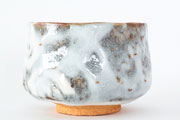
Hagi ware (called Hagi yaki in Japanese) is a form of porcelain produced mainly in the city of Hagi in Yamaguchi prefecture. Hagi ware is rarely decorated, remaining as simple as possible to make the most of the features of the clay. This simplici…
View more
-
Mino ware Mino yaki
- Ceramic
- Gifu
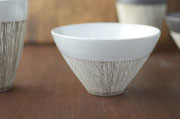
Mino ware (called Mino yaki in Japanese) is a ceramic ware produced in the Tono area of Gifu prefecture. It has a long history and tradition but has adapted to modern life style. A notable feature of Mino ware is its wide variety of pottery. Mino …
View more
-
Nishijin brocade Nishijin ori
- Woven textiles
- Kyoto
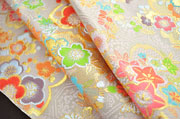
Nishijin brocade (called Nishijin ori in Japanese) is woven silk produced in the northwestern part of Kyoto. Kamigyo ward and Kita ward cover this area of Kyoto today, but this area is called Nishijin. According to official rules, only the brocade…
View more
-
Kamakura-bori lacquerware Kamakura bori
- Lacquerware
- Kanagawa
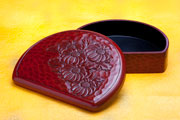
Kamakura-bori is a type of lacquer ware made in the area around the city of Kamakura in Kanagawa prefecture. The tradition dates back to the Kamakura period (1185-1333) when Tsuishu and Tsuikoku, thickly lacquered wooden wares, were imported from …
View more
-
Hakone wood mosaic Hakone yosegi zaiku
- Wood, bamboo crafts
- Kanagawa
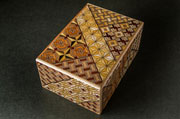
Hakone yosegi zaiku is a form of marquetry produced in the town of Hakone, Kanagawa prefecture, an area renowned for having the most natural environment in Japan. For this reason, there is a rich variety of tree species found on Mt. Hakone. Such a…
View more
-
Kyo textiles Kyo yuzen
- Dyed textiles
- Kyoto

Kyo textiles are dyed textiles made throughout Kyoto prefecture that feature a wide range of vivid colors and a technique of pictorial designs of animals, nature and daily items called yuzenmoyo. The dyeing method is very unique as artisans put gl…
View more
-
Mino traditional Japanese paper Mino washi
- Traditional Japanese paper
- Gifu
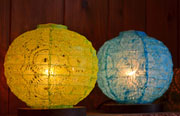
Mino washi is a type of Japanese paper made in Gifu prefecture. Washi is made from paper mulberry which is a plant that grows in the city of Mino, a place of abundant forests. Ancient manuscripts in the Shosoin Repository* indicate the history of …
View more
-
Tsugaru lacquerware Tsugaru nuri
- Lacquerware
- Aomori

Tsugaru lacquerware (called tsugaru nuri in Japanese) is produced around the city of Hirosaki in Aomori prefecture. Lacquerware has been produced in this region since the middle of the Edo period (1603-1868), but it began to be called Tsugaru lacq…
View more
-
Kyo folding fans Kyo sensu
- Other crafts
- Kyoto
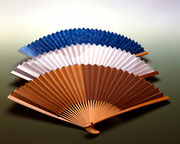
Kyo folding fans (called Kyo sensu in Japanese with sensu meaning folding fan) are mainly produced in Kyoto. From ancient times they have been valued as high quality art works because of their beautiful designs with gold or silver leaves or gold l…
View more
-
Kaba cherrybark woodcrafts Kaba zaiku
- Wood, bamboo crafts
- Akita
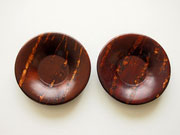
Kaba cherrybark woodcrafts (called Kaba zaiku in Japanese) are a type of wood bark craft produced in the former town of Kakunodate, Akita prefecture. While the character for kaba means birch, for this context the word refers to the bark of wild ch…
View more
-
Odate bentwood Odate mage wappa
- Wood, bamboo crafts
- Akita
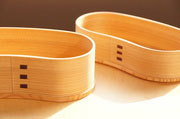
Odate mage-wappa is a bentwood craft produced all over the city of Odate, Akita prefecture. This craft is well-known both domestically and abroad for having a beautiful curved shape and being lightweight. The key feature of Odate bentwood is the b…
View more
-
Kawatsura lacquerware Kawatsura shikki
- Lacquerware
- Akita
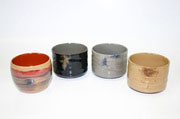
Kawatsura lacquerware (called Kawatsura shikki in Japanese) is produced in the town of Kawatsura in the southern part of Akita prefecture. Everyday use items like bowls and trays have been produced here for a long time. Kawatsura lacquerware has e…
View more
-
Gifu lanterns Gifu chochin
- Other crafts
- Gifu
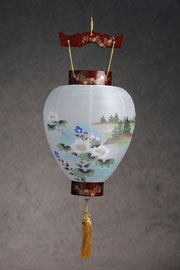
Gifu lanterns (called Gifu chochin in Japanese) are produced in the city of Gifu, Gifu prefecture and have a history of over three hundred years. In 1995, their high level of craftsmanship was recognized with a designation as a National Traditiona…
View more
-
Kyo doll Kyo ningyo
- Dolls, kokeshi
- Kyoto
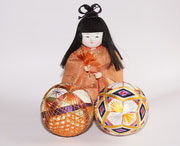
Kyo dolls (called Kyo ningyo in Japanese) are produced in the city of Kyoto and its surrounding areas in Kyoto prefecture. They are made by several different artisans with their specialized expertise. There are doll head artisans as well as those …
View more
-
Akama inkstone Akama suzuri
- Writing tools
- Yamaguchi
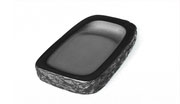
Akama inkstone (called Akama suzuri in Japanese) is produced around the cities of Shimonoseki and Ube in Yamaguchi prefecture. A type of stone called akama, an ideal material for producing the inkstones, is used for Akama inkstone. Therefore this …
View more
-
Ichii woodcarvings Ichii itto bori
- Wood, bamboo crafts
- Gifu
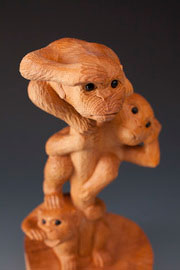
Ichii woodcarvings (called Ichii itto bori in Japanese) are produced in the Hida region of Gifu prefecture, and made only from the wood of ichii (Japanese yew), the prefectural tree of Gifu. The ichii tree gets its name from a scepter made of Japa…
View more
-
Kyo uchiwa fans Kyo uchiwa
- Other crafts
- Kyoto
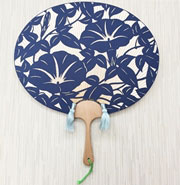
Kyo uchiwa are a type of fan made in Kyoto prefecture. From the many types of Japanese traditional fans, there are three broad categories: Chinese-inspired, southern-inspired, and Korean-inspired with this craft coming from the third category. Th…
View more
-
Tendo Japanese chess pieces Tendo shogi koma
- Other crafts
- Yamagata
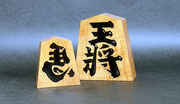
Tendo Japanese chess pieces (called Tendo shogi koma in Japanese) are made in the cities of Tendo, Yamagata, and Murayama in Yamagata prefecture. Production is thought to have begun in Tendo back during the Edo period (1603-1868) and now the city …
View more
-
Yamagata cast iron Yamagata imono
- Metal works
- Yamagata
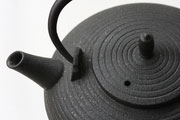
Yamagata cast iron (called Yamagata imono in Japanese) is produced in the city of Yamagata, Yamagata prefecture. At first, metal fittings, Buddhist statues, and daily use items were made. Then, as skills and techniques were developed, iron kettles…
View more
-
Hida-shunkei lacquerware Hida shunkei
- Lacquerware
- Gifu
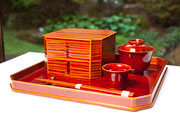
Hida-shunkei lacquerware is produced around the city of Takayama in Gifu prefecture. The name is said to come from the fact that the articles produced initially had a similar coloring to Hishunkei tea containers. This craft is notable for having …
View more
-
Ouchi lacquerware Ouchi nuri
- Lacquerware
- Yamaguchi
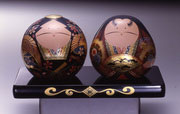
Ouchi lacquerware (called Ouchi nuri in Japanese) is produced around the city of Yamaguchi, in Yamaguchi prefecture. This craft emerged under the Ouchi clan, which boasted significant influence and power in the region during the Muromachi period (…
View more
-
Kyo ware/Kiyomizu ware Kyo yaki Kiyomizu yaki
- Ceramic
- Kyoto
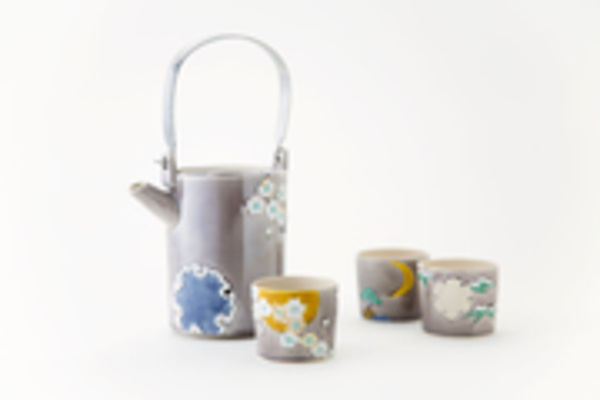
Kyo-ware/Kiyomizu-ware (called Kyo yaki/Kiyomizu yaki in Japanese) is a type of pottery produced in the Kyoto area. Originally, Kyo-ware was a general term for all pottery produced in Kyoto, while Kiyomizu-ware specifically referred to pottery pro…
View more
-
Kyo laquerware Kyo shikki
- Lacquerware
- Kyoto
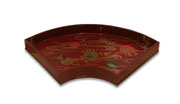
Kyo lacquerware (called Kyo shikki in Japanese) is produced in the Kyoto area. Since it developed at the same time as the tea ceremony culture, this craft possesses a wabi-sabi* quality. Kyo lacquerware has a thinner and more delicate wood grain t…
View more
-
Odawara lacquerware Odawara shikki
- Lacquerware
- Kanagawa
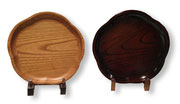
Odawara lacquerware (called Odawara shikki in Japanese) is a type of lacquerware that is made in the city of Odawara, Kanagawa prefecture. It features a glossy lacquer finish which highlights the elegant grain of the wood material. While beautiful…
View more
-
Oitama tsumugi silk Oitama tsumugi
- Woven textiles
- Yamagata
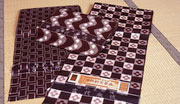
Oitama tsumugi is a silk fabric produced in the Yonezawa, Hakutaka and Nagai regions of Oitama in southern Yamagata prefecture. The area was well-known for producing and exporting ramie, a tall plant of the nettle family that has been used to make…
View more
-
Kyo braided cords Kyo kumihimo
- Other textiles
- Kyoto
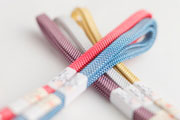
Kyo Braided Cords (called Kyo Kumihimo in Japanese) are produced around the cities of Kyoto and Uji, Kyoto prefecture. Since the Heian period (794-1192), this craft has been found on prestigious and sacred pieces such as Buddhist and Shinto altar …
View more
-
Kyo wood joinery Kyo sashimono
- Wood, bamboo crafts
- Kyoto

Kyo Sashimono is a kind of wood joinery produced in the prefecture of Kyoto. Sashimono is a collective name for furniture and furnishings assembled with wood joints that originates from the process of measuring with a monosashi or woodwork ruler. …
View more
-
Kyo-komon textiles Kyo komon
- Dyed textiles
- Kyoto
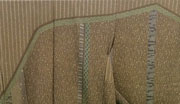
Kyo Komon are fine-patterned textiles produced in Kyoto prefecture. Kyoto, a historical center of dyed textiles, is renowned for its superb fabrics resulting from exceptional dyeing and stencil making. This craft has beautifully elegant colored pa…
View more
-
Kyo Buddhist altar Kyo butsudan
- Household Buddhist altars
- Kyoto

Kyo Buddhist Altars (called Kyo Butsudan in Japanese) are produced in the cities of Kyoto and Kameoka in Kyoto. Most Kyo Buddhist Altars are made for temples instead of households. They are professionally handcrafted by a number of respective expe…
View more
-
Kyo embroidery Kyo nui
- Other textiles
- Kyoto
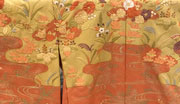
Kyo Embroidery (called Kyo-nui) is produced in Kyoto, Kyoto prefecture. This graceful craft reflects the elegance of Kyoto's culture and requires meticulous skill. Artisans of this craft pursue absolute perfection and freely use costly silk, …
View more

































































































































































































































































































